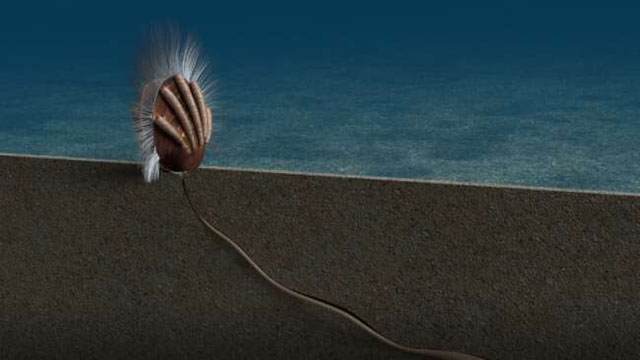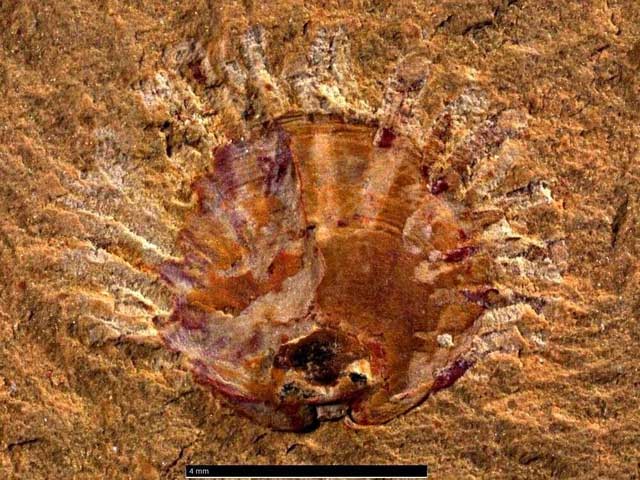Fossil evidence for a parasitic-host relationship
The oldest known fossil evidence of parasites was discovered by a team of scientists in Yunnan, China.
Described in the journal Nature Communications, the fossil specimen revealed that the parasite symbiotic - the host took place shortly after the explosion in 154 million years ago in the Cambrian period.

The specimen of this parasite is an ancient hairy cockle.
The parasite describes the relationship between species, including an organism called a parasite, living on or inside another organism called a host. For example, humans can see tapeworms (which can be up to 10 meters long) occupying our digestive system (and other areas as well), depriving nutrients and damaging organs. our.
The specimen of this parasite was discovered by a team in Yunnan, including an ancient hairy shellfish - a shellfish that looks almost like a clam, although these two species are unrelated. intimately related - and a tube-like creature. The researchers noted that on the fossilized form of this ancient oyster ( Neobolus wulongqingensis) , there were small tubes lined up in the immediate vicinity where the oysters' own nutritional lines would absorb the nutrient.

One of the specimens was tested by researcher Zhang and his colleagues
With the tiny size of the tubes, and the special appearance near the nutrient stream, the research leader - Zhifei Zhang - and colleagues concluded that the tube-dwelling creature is a parasite. The tube-eating parasites that live on the shells of oysters weaken the oysters' chances of survival when stealing its food.
Other examples of stealing parasites that exist today include dung beetles - they steal from the dung beetle's reserves - animals that have spent their lives moving large numbers of animal dung for the purpose build a nest for yourself. This behavior benefits thieving bugs as they can focus on rolling feces or digging tunnels without wasting time out searching for dung.

Recreate a generous ancient oyster with a tubular parasite on its shell.
Evidence of a parasitic relationship is not easy to detect in fossils, since many cases can only be confirmed based on observable behaviors, such as the case of stink bug stealing.
Therefore, all known parasitic interactions from fossils depend on the specimen, and their ability to communicate is not only the presence of parasites, but also their damage. master.
Researcher Zhang and colleagues found that the robotic creature lives in the pipe and weakens the host clam, the oldest parasitic-host relationship identified in the materials. Fossils so far.
- Horrifying parasitic bees control and nibble on the host's body
- Discover surprise about mistletoe
- Medical mystery reveals a new host of parasitic roundworms on mice
- Video: A close-up of a parasitic monster
- The species of blood-sucking plants
- Found a fossil dinosaur fossil
- Animals on Earth behave like alien creatures
- Parasitic fungi cause the cicadic belly to explode to spread spores
- These parasites are capable of transgender and controlling other species
- Discover 52 million year old fossils of strange creatures
- Blood sucking creatures appear in tuna boxes
- Killer bee parasites hidden in flies pupae 35 million years
 Discovered an ancient centipede fossil 99 million years old
Discovered an ancient centipede fossil 99 million years old Discovered bat-like dinosaurs in China
Discovered bat-like dinosaurs in China Discovered a 200-year-old bronze cannon of the coast
Discovered a 200-year-old bronze cannon of the coast Discover 305 million-year-old spider fossils
Discover 305 million-year-old spider fossils